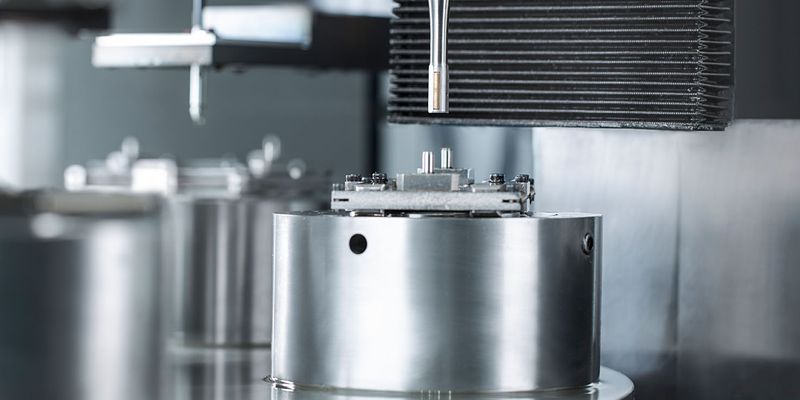- April 21, 2023
The precision finishes are post-treatment to many part manufacturing industries such as the automotive, aerospace, and medical. Among them, the honing process is used commonly and is suitable for precision parts of varying shapes and sizes. However, getting the best results is only achievable by understanding the process.
This article discusses the honing process, the different honing machines available, and their application in industrial manufacturing.
What is Honing in Manufacturing?
The honing is an abrasive machining process applicable in polishing bore geometry, dimensional control, final surface finish, and surface structure. It involves using a honing tool of bounded adhesive sticks with oscillatory and rotational motions. This tool slowly removes material from the machined surface and the internal diameter of holes to give the desired shape and finish.
Part manufacturers use the honing process for machined surfaces from grinding, boring and drilling operations. When used, there is an improvement in the workpiece’s quality due to prolonged contact with the abrasive stones. Furthermore, it can correct errors made from previous machining operations.
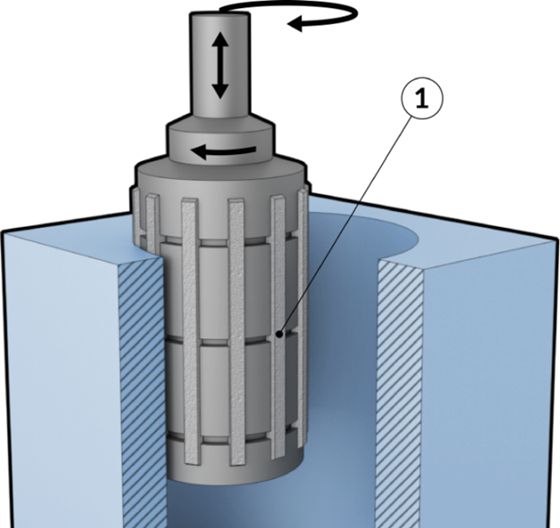
Why Use Honing for Machined Parts?
The honing finish process offers many advantages. Some of them are explained below.
1. Improve Accuracy
Honing can meet the tight tolerances of many machined parts, thereby ensuring that such parts are up to standard. Furthermore, accuracy is the major difference between honing and grinding, as honing is more accurate. The material removal rate in the honing finish is slower than in precision grinding, leading to lesser heat generation.
2. Versatility and Compatibility
The versatility of honing finish is second to none. The honing tool can machine many materials including cast iron, mild steel, and composites. It is important to note that there are different settings for different materials. For a seamless procedure, machinists may need to adjust the parameters when honing metals.
Furthermore, honing is compatible with parts of varying lengths and weights. Even very small parts can be honed with no stress.
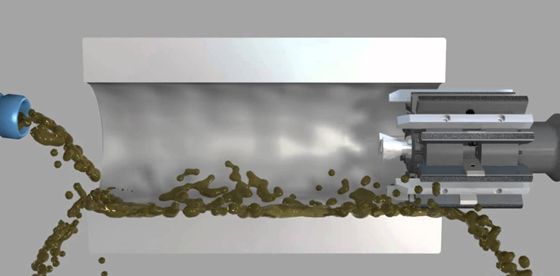
3. Faster and More Efficient Production
The honing machine can run for days without any breaks. Operating the machine on its highest setting will not affect the quality of the final output. This makes honing is a cost-effective machining option to polish bores.
4. Keep Safety
Honing guarantees the safety of the operator and other employees. This is due to its full automation, which leaves no room for human intervention. Furthermore, most honing machines come with protective enclosures. As a result, this prevents the occurrence of occupational hazards as a result of the flying particles.
Types of Honing Operations
There are two main types of honing operations based on the amount of human intervention or the level of automation.
Machine Honing Operation
Machine honing is the most common honing process many part manufacturers use. A CNC machine controls the rotating and reciprocating motions of the hone under standard pressure. Hence, this honing process employs little to no human intervention to create the desired patterns in bores. Because the process is fully automated, it can precisely finish very hard materials.
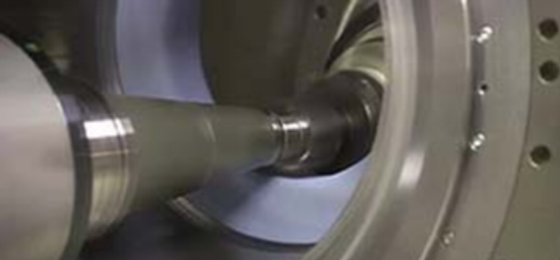
Manual Honing Operation
This involves using abrasive stones to obtain a perfect size and surface finish of bores. In this honing process, the machinist moves the workpiece over the rotating hone using the hands. This gives more autonomy over the honing operation.
However, the popularity of manual honing is reducing due to several reasons. A common one is that manual honing finish is a time-consuming process. Another reason is that the shape of the hole may deviate from normal if the workpiece is not adequately supported.
Different Machines for Honing Finish
There are two main types of honing machines. Understanding how each machine works is important to get the best results.
1. Horizontal Honing Machines
Here, the machine operates parallel to the honing tool and workpiece. The machine has a headstock and tailstock that serves as the major components. Additionally, the worktable lies between the headstock and tailstock, which are on opposite sides of the machine. The spindle and honing tools are just above the workpiece.
The gravitational force pulls the chips into the bed as the tool shapes the hole. After that, the operator removes the chips to prevent build-up. Furthermore, this machine is suitable for honing long and cylindrical metals such as shafts, rods, and tubes.
2. Vertical Honing Machines
Vertical honing machines are less complex than horizontal ones. With the vertical honing machine, the spindle operates vertically to the ground. The mode of operation of this honing machine is relatively simple. It involves attaching the honing tool to the tool holder that rotates along the X and Z axes. The chunk then holds the workpiece and moves around the Y axes.
This honing machine is important for parts where high accuracy and consistency are compulsory. They are the right choice for parts with complex geometries in the aerospace and automotive industry. Additionally, a vertical honing machine is suitable for the mass production of parts.
What Typical Tools Are Used for Honing Process?
There are different types of tools to use. They have peculiar functions and work together to achieve the smoothest surface finish.
1. Honing Stones
The honing stone is undoubtedly the most important honing tool. They are abrasive tools that remove a small amount of material from the surface to provide a fine surface finish. Furthermore, honing stones may come as a single piece of abrasive material.
Additionally, there are types with many layers of material attached to a metal base. There are several materials one can use to make honing stones. Diamond and silicon carbide are the most common.
Diamond honing stones
A diamond honing stone has a metal base with attached diamond particles. As a result, it is very hard and strong. It comes in various grit sizes and shapes and is ideal for honing metals that are tough.
Silicon carbide honing stones
Silicon carbide honing stone cuts more aggressively to give a more accurate and even surface finish. Part manufacturers use silicon carbide honing stone for softer metals, including aluminum and brass.
Note: It is important to consider the material being honed and the hole size before choosing a honing stone for a part.
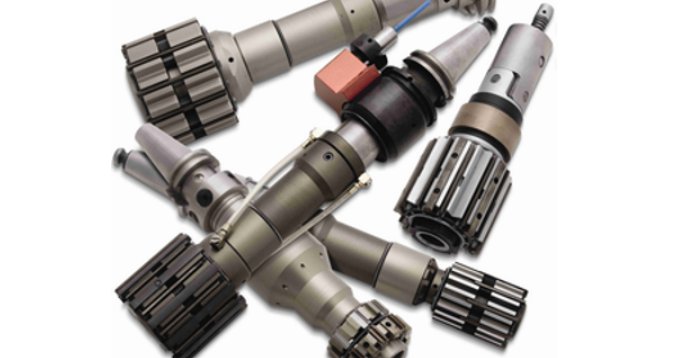
2. Honing Mandrels
The honing mandrel positions the abrasive stones during the honing process. Many sizes and shapes of honing mandrels are available to suit different bores. Like a honing stone, the mandrel can come in different materials, with aluminum oxide, diamond, and silicon carbide being the most common.
3. Honing Oil
The honing oil serves as the lubricant in the honing process. The lubricant is like those used in finishing engineering fit systems. This oil has additives that provide a smoother and more precise finish. Furthermore, honing oil does more than just lubrication. For example, it reduces the heat generated during honing.
Note: It is important to clean out excess oil to avoid a greasy final product.
Applications of Honing in Different Industry
Part manufacturers use honing extensively for cylindrical parts. Below are just a few applications.
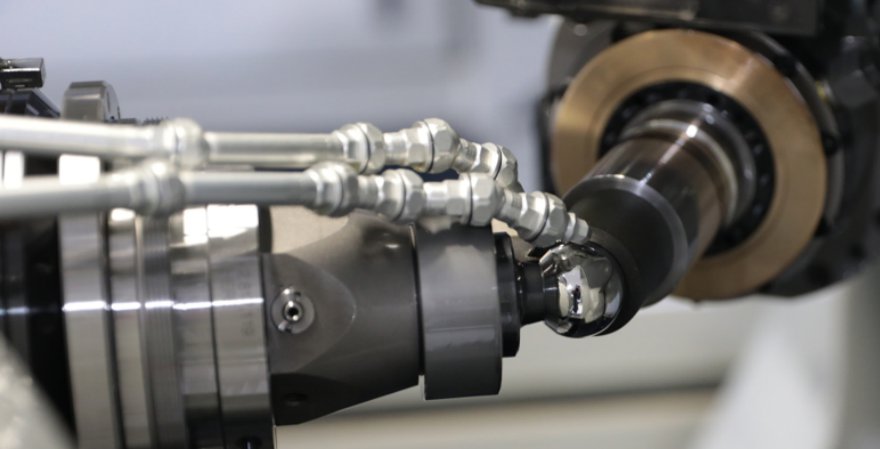
Automotive Industry
Honing is an important aspect of automotive manufacturing. It helps to polish holes used in various car components. The honing process comes right after boring to finish cylinders for car engines. This ensures a proper fit between the piston rings and cylinder walls.
Additionally, honing the cylindrical surface also facilitates proper oil retention and lubrication. Auto part manufacturers also use a honing finish to resize the cylinder bore.
Aerospace Industry
Aircraft manufacturers use the honing process extensively in manufacturing and maintaining engine components. One can use honing for routine maintenance of the engine components. In addition, honing is not limited to aircraft engines and hydraulic systems. It is one of the last steps in manufacturing bearings, and aerospace fasteners.
Mold Making
Honing finish also plays a role in the mold-making process. A mold needs to have high dimensional accuracy and a fine surface finish. This property is important because a flawed mold means a flawed final part. Honing helps to create precise finishes on the mold surfaces. This, in turn, ensures proper part quality and consistency.
Medical Industry
Honing is important in manufacturing medical devices, including surgical instruments and implants. It helps improve final medical products’ consistency and surface geometry. Furthermore, honing machines are compatible with medical-grade materials, including stainless steel and titanium.
What’s more, deviation in size and shape can affect the functionality of an orthopedic implant. Honing can achieve tight engineering tolerances required by many surgical devices.
Differences Between Honing and Lapping
Though honing and lapping are abrading processes, there are clear distinctions between both processes.
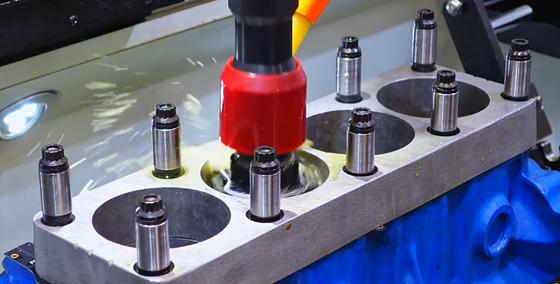
1. Mode of Operation
Lapping involves using abrasive particles premixed with oil or water-based liquid known as a slurry. This slurry helps to create an accurate finish on a domed or flat surface. On the other hand, honing uses bounded abrasive stones to produce a finer finish in cylindrical holes.
2. Amount of Material Removed
Lapping is a gentler abrading process. Compared to honing, the lapping process removes less material from a surface. This is important when working with delicate metals. Lapping is a correcting process to remove irregularities due to preceding machining operations.
3. Accuracy
The lapping process is more accurate, especially for small parts. Honing could create new flaws in the process of adjusting old ones. The continual rotation associated with honing can be a limitation. This is because a minute change in pressure may result in an oval hole. However, one can lean manufacturing to avoid deformation and human error.
4. Process Technicality
Operating a lapping machine is labor intensive and requires skilled operators, unlike honing machines which are easy to set up and operate. Also, lapping does not require any special work-holding fixture unlike the honing process.
Conclusion
Honing is essential for the proper functioning of parts. This process provides a smooth surface finish, prevents wear, and prolongs the lifespan of a part.
Are you looking for precision machining and finishes for your projects? WayKen offers a wide of hole machining and surface treatment services, including drilling, boring, tapping, reaming, grinding, and honing. You will get the desired surface machined parts and prototypes in a cost-effective and fast turnaround way.
FAQs
Why choose honing over other hole machining processes?
Honing has many advantages when compared to other machining processes. Firstly, the honed parts are always within the desired tolerance limits. Additionally, it gives a better surface finish with minimal material removal. This is an important consideration for expensive materials.
Which honing tool is the best?
No honing tool is considered the best. The choice of the right one for your project depends on some factors. It is important to consider the shape and size of the hole. Furthermore, the desired surface finish may influence your choice when selecting the right tool for your application.
Does honing have limitations?
Just as with other machining processes, honing does not go without shortcomings. Honing is a time-consuming finishing process. Additionally, any slight mistake may result in a distorted final product.

